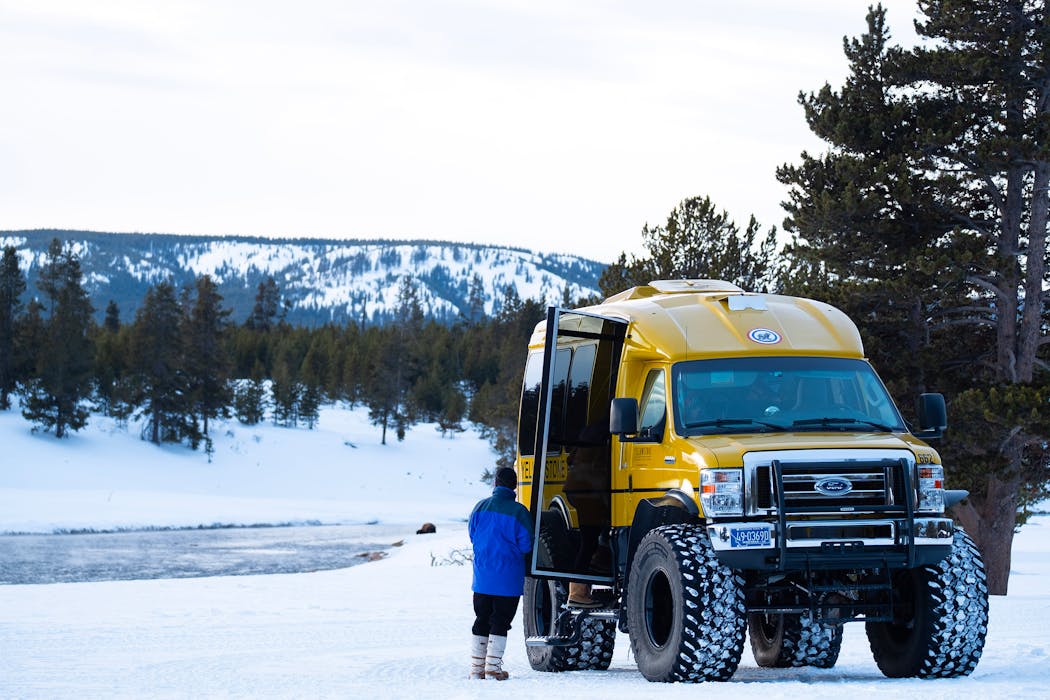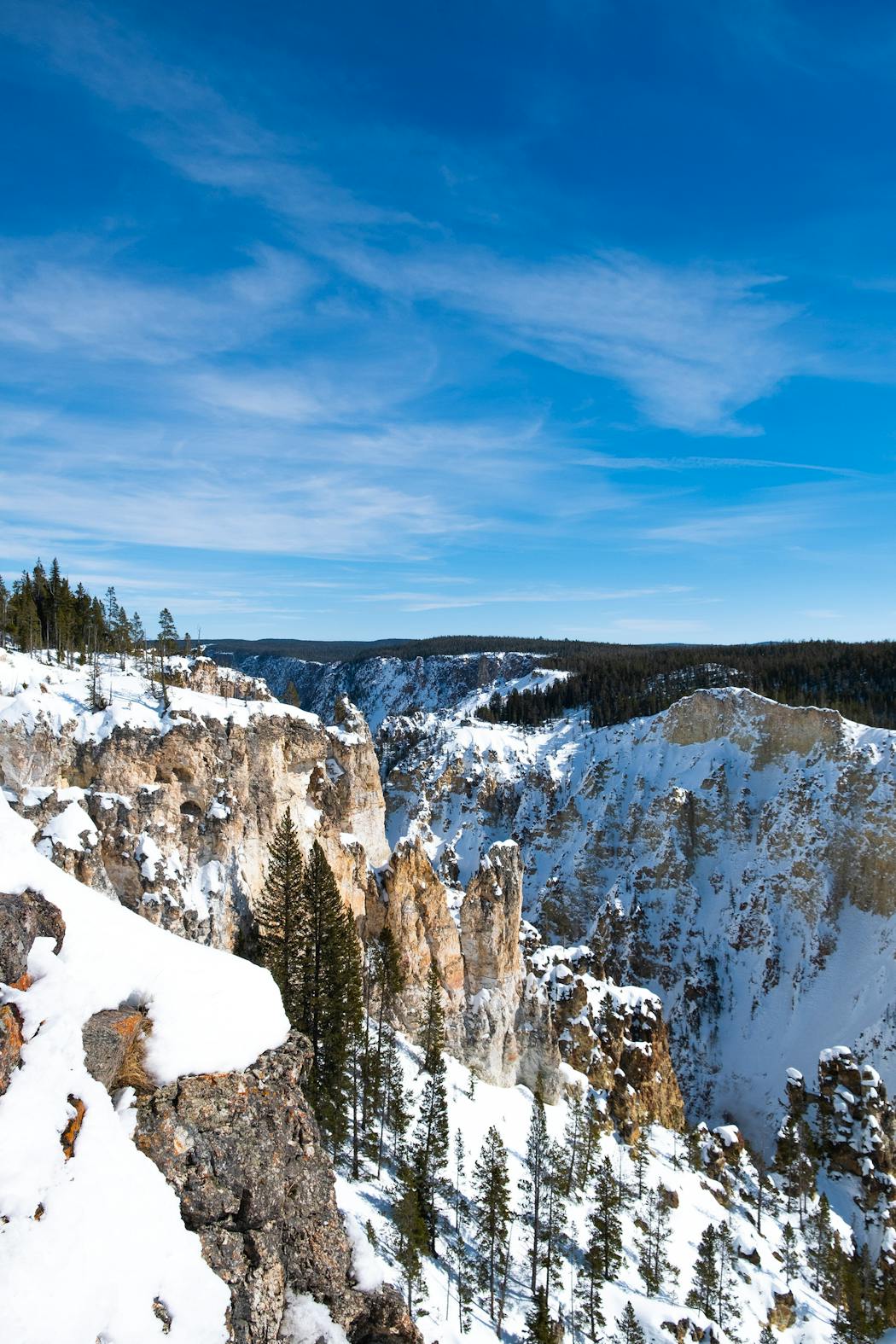As a surfer-snowboarder based in San Diego, the idea of traveling to the American West come winter never crossed my mind. In fact, with the first flutter of a snowflake, I habitually head to the hills for ski season — be it Mammoth, Big Bear or an unfamiliar mountain far from home. Setting fresh tracks with hiking boots rather than a snowboard seemed a waste of precious powder.
Until of course, I had a couch affair with "Yellowstone." The Paramount Network series visually took me to the outer range of Montana where cowboys are as branded as the cattle they drive and the horses they break.
In all my years, never had a Hollywood product inspired me to pivot my winter plans for an unknown destination. But somehow Yellowstone succeeded. I became one with the Dutton family ranch, turning the fictitious drama into a biopic in my mind, longing to visit this agrarian West where locals fought to keep the wild wild.
And thus, the trip planning began. It started with dropping pins onto Google Maps, followed by research on flights, lodging, availability and the best time to avoid the crowds (not to be confused with "the best time to visit").
More than 4 million people explore Yellowstone National Park annually, most of whom visit in summer. I wanted to experience Yellowstone in its purest, most perfect form. So, winter it was, with husband in tow because, frankly, the man helps me see the world in color. To further thin out human contact, we chose to travel midweek.
Rumor had it that December through early March was the best time to witness fire and ice. That's when geysers, hot springs, mud pots and steam vents turn into geothermal thespians during freezing temperatures. Naturally, the TV version had me longing to see a wolf in a snowy meadow (maybe even stalking an elk or two). If that was on the cards for this journey, I'd consider it a successful trip.
Until then, we'd have to settle for just the elk (unstalked of course), as well as deer and hawks that greeted us as we entered the corridor near Paradise Valley. Marking the north gateway was the Roosevelt Arch dating to 1903. Inscribed in the cornerstone was, "For the benefit and enjoyment of the people."
Exactly 150 years after Yellowstone was founded in 1872, those words still rang true. Even before it was named the world's first national park, Yellowstone's 2.2 million acres served as a refuge for Native Americans who foraged its land and waters. As history goes, decades of tragedy bruised the park with overhunting, devastating fires and introduction of nonnative species.
Lessons from the past have helped rebuild the park's ecosystem through conservation efforts and preservation of its heritage — making Yellowstone the healthiest it has been in over a century.
The landscape doesn't lie.
We saw it for ourselves, the awe-inspiring wonderland flanked by rivers, lakes, waterfalls, canyons and more than half of the world's hydrothermal features. To access these majestic canvases, we planned to overnight at Mammoth Hot Springs Hotel.
That's when the real adventure began. In winter, only two of Yellowstone's nine hotels are open, and roads (other than Highway 212) can only be accessed by snowmobile or snowcoach. We chose the latter.
Built in 1936, Mammoth Hot Springs Hotel recently underwent a major renovation, yet has retained historic integrity in spaces including the Map Room. Here we sipped on huckleberry margaritas and watched elk graze outside our window. We dined on locally sourced entrees like bison tenderloin and Parmesan-crusted trout.
By 8 a.m., we were on our first wildlife tour through Lamar Valley. It didn't take long before a herd of bison crossed our path, swaying like elephants with thick fur coats curled on the edges like a perm. These mighty beasts blocked the road, poised and confident as if their winter endurance granted them license to dominate humanity.
Naturally so. At 2,000 pounds, and surrounded by 5,000 other bison-park friends, we watched in silence — jaws to the ground — as these glorious brutes nearly shook the earth they walked on. From their nostrils billowed plumes of smoke, dissipating by the time it reached their horns.
Before noon, we had spotted a bald eagle, a moose, bighorn sheep and a pack of coyotes devouring a kill. Unlike the mangy coyotes roaming our San Diego property, these coyotes were wilding magnificent. Their coats were full and their faces fierce, to the point I asked our guide twice, "Are you sure that's not a wolf?"
If only it were. Spotting a wolf in Yellowstone is a rarity, unless (as our guide explained), you happened to be on the tour the previous day. Apparently, an entire pack of wolves had taken down a bison, bringing National Geographic to life before the group's urban eyes.
But I wouldn't give up. I was determined to dance with wolves before our trip was over, or better yet, have a "three dog day." Those who witness a fox, coyote and wolf are considered Yellowstone lottery winners.
I was ready to gamble, binoculars pointed toward the horizon on the hunt for nature. We trailed a creek lined with boulders, each one capped in virgin snow like mushroom tops waiting to be harvested.
En route, we ate boxed lunches before climbing into our vessel for the remainder of our trip: a snowcoach. This monster truck-meets-school bus had massive tires that tackled the park like a champ. Beyond Canary Springs, we climbed to 7,000 feet, leaving behind aspens, lodgepole pines, blue spruce, cottonwoods, and junipers. Awakening us near Swan Lake Flats was a pristine view of Electric Peak, peppered with a flock of trumpeter swans within frame.
Our ultimate destination was Old Faithful, some 50 miles from Mammoth Hot Springs Hotel. The journey was interrupted by commercial breaks brought to us by Fountain Paint Pots bubbling in Lower Geyser Basin, and Roaring Mountain billowing with sulfide gas.
Along Fountain Paint Pot Trail, one can experience all four thermal features including mud pots, geysers, hot pools and fumaroles. The sound of hissing steam pushed through narrow vents in the earth, proving that Yellowstone was very much alive.
We trailed Gibbon River to Beryl Spring where boiling water shimmered like gemstones. At one point, walls of steam met curtains of clouds, giving the impression that Yellowstone was on fire. Nearing our second hotel — Old Faithful Snow Lodge — we caught a glimpse of its sleeping namesake.
This highly predictable geothermal feature erupts nearly every two hours, making it one of only six geysers that park rangers can predict. Until showtime, we
would settle into Snow Lodge, a cozy log-cabin style hotel with fireplaces, a skating rink and a ski shop for those who want to cross country ski right outside the door.
Late to bed, early to rise, we were ready to walk off last night's dinner of bison short ribs and wild game bolognese. And walk we did, straight to Geyser Basin where boardwalks weave around 150 hydrothermal wonders. Reminiscent of sea anemones, Caribbean waters and bubbling pots of rust, the visual diversity was staggering.
It all culminated at Old Faithful's viewing area. As if waiting for a theatrical performance to begin, I noticed that we were the only ones there to witness the spectacle. This contrasted with the photos I had seen online, where hordes of tourists held cameras overhead to avoid obstruction.
Now, we had the place to ourselves, waiting silently with great anticipation, as if Old Faithful was a celebrity ready to make her Oscar debut. And then, from her mouth — no wider than a wrist — spewed a plume of smoke, followed by hissing, and then eventually a burst of steam and water shooting 140 feet into the sky. It was magnificent.
That afternoon, we strapped into our cross country skis and glided five miles along Lone Star Geyser Ski Trail. The groomed route traced Firehole River to Lone Star Geyser, known to erupt roughly every three hours. The pace — albeit slow in comparison to snowboarding — was unexpectedly therapeutic, forcing me to absorb creation one breath at a time.
During our drive back to our hotel, frosty bison crossed our path, leaving trails of diamond dust drifting in the air. In a duvet of snow, a red fox plonked onto small prey, aiming to pin and catch a rodent along Nez Perce Creek.
It was a good day.
After a deep sleep, we coordinated our final day to highlight the "Grand Canyon of Yellowstone." Having hiked rim-to-rim of the glorious Grand Canyon in Arizona, I wasn't expecting much. But then, Yellowstone slapped me in the face with reality.
Spanning 20 miles long, the cotton-candy-colored canyon is 4,000 feet wide and 1,200 feet deep. Plunging waterfalls formed sheets of ice and frozen cones like stalactites in a mineral-stained cave. On the banks of Upper Falls were paw tracks left by river otters, overshadowed only by the marshmallow-like caps along Lower Falls.
This natural force of perfection was the final flirty wink from Yellowstone. Three days prior, I entered the park longing to see a wolf. Instead, I left with a reverence for 150 years of progress — not the type that involves mass development or sky cranes, but rather the type that prioritizes nature over people.
As our guide explained, it's the errors of our past that have reshaped the visions of tomorrow. I love that Yellowstone gets this.
So maybe I didn't see a pack of wolves, but without a doubt, I danced with them.

After 4 decades in music and major vocal surgery, Jon Bon Jovi is optimistic and still rocking
Rom-com author Emily Henry knows the secret to having a healthy relationship with love





